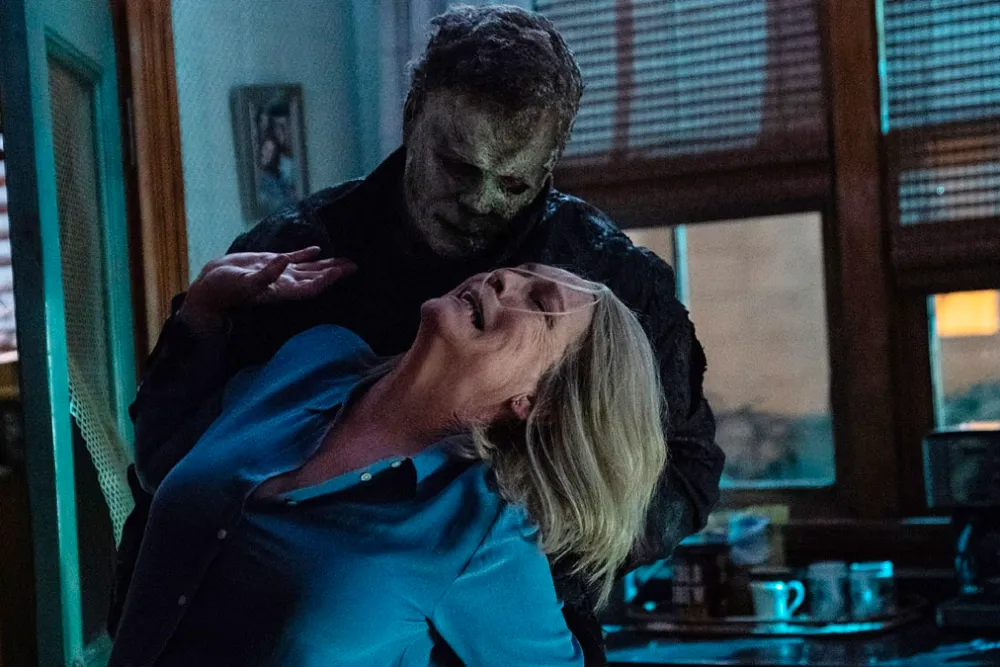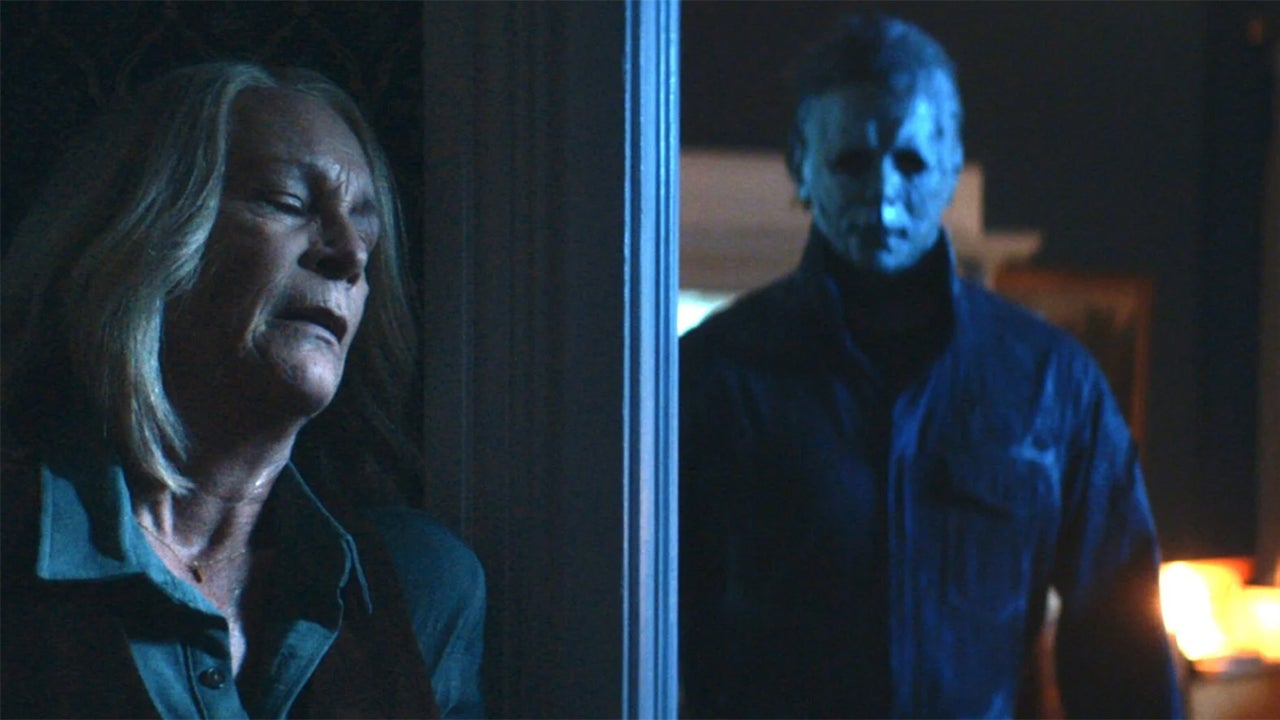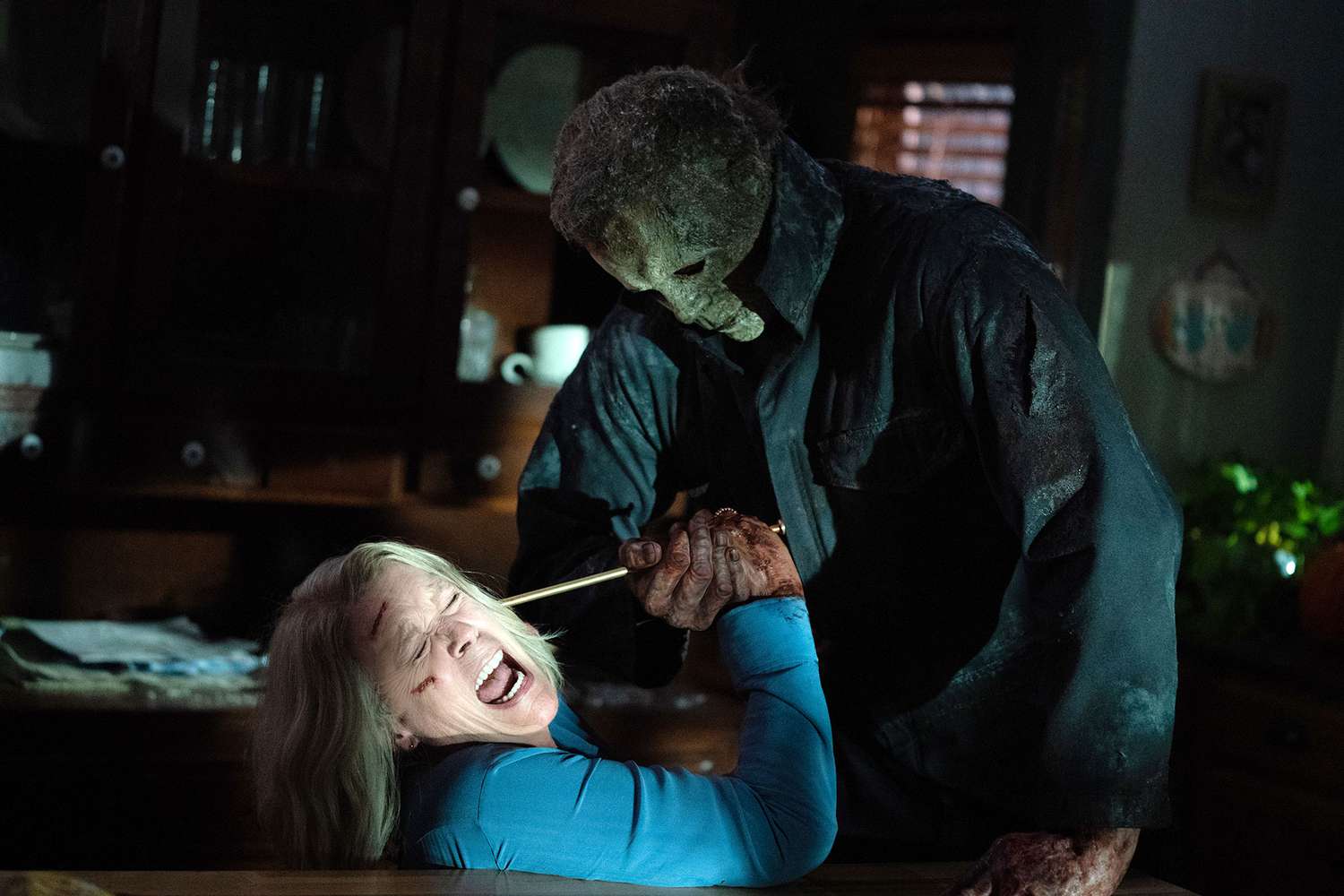“Halloween Ends” (2022) marks the conclusion of the rebooted trilogy of the iconic Halloween franchise. Set four years after the events of Halloween Kills, the film follows Laurie Strode (Jamie Lee Curtis) and her granddaughter Allyson, who are coping with the aftermath of Michael Myers’ reign of terror. Living together, they navigate their grief and trauma from Michael’s last deadly spree.
The town of Haddonfield, still haunted by the aftermath of Michael’s killings, sees the introduction of Corey Cunningham, a young man who was blamed for the death of a boy he babysat three years prior. As tragedy strikes again in Michael’s absence, Corey becomes the focal point of the story’s new question: Is evil something that is born, or something that is created?
Corey’s role in Halloween Ends marks a dramatic shift in the franchise’s focus. After being bullied by a group of town residents, Corey is thrown over a bridge, where Michael Myers finds him and drags him into his lair. Michael, seeing something in Corey, allows him to survive, thus sparking Corey’s transformation into a new iteration of evil.
Donning Michael Myers’ mask and outfit, Corey embarks on a killing spree, fueling the growing divide between him, Laurie, and Allyson. This moment underscores the central question of the film: evil is not confined to one man, but can manifest in different forms, symbolized by Michael Myers and now Corey Cunningham.
As Corey embraces the darkness within, he becomes an increasingly destructive force, mirroring Michael’s actions. Laurie, aware of the unfolding tragedy, lures Corey to her home by faking her suicide. The encounter leads to a brutal confrontation, with Laurie successfully wounding Corey before he stabs himself in an attempt to frame her for his murder.
However, Corey’s fate is sealed when Michael Myers, the original Boogeyman, returns to reclaim his mask, killing Corey in the process. This marks the beginning of a final showdown between Laurie and the true embodiment of evil.

Michael Is Gone, But Evil Remains: A Legacy That Continues To Shape Haddonfield
The climactic moments of Halloween Ends arrive on Halloween night, as Laurie confronts Michael Myers in a final, deadly encounter. With help from Allyson, Laurie traps Michael, rendering him immobile. After a tense and bloody struggle, Laurie and Allyson manage to defeat the once-unstoppable killer, bringing an end to his reign of terror.
The town of Haddonfield collectively witnesses Michael’s body being disposed of in a scrapyard shredder, symbolizing the definitive end of Michael Myers as a physical threat. This act of finality not only represents the physical death of Michael but also signals the end of Laurie’s battle with her past trauma and grief.
Corey Cunningham’s descent into darkness is pivotal to the film’s exploration of evil. Laurie’s earlier assessment that evil “changes shape” is manifest in Corey’s character arc, as he becomes a modern-day embodiment of Michael Myers. Corey’s potential for a normal life is destroyed by the town’s hysteria and judgment, allowing the evil within him to flourish.
This reflects a central theme in Halloween Ends—evil is not a static entity but an evolving force, capable of taking on different forms depending on the circumstances and the person it consumes.
Laurie Strode’s journey throughout the Halloween saga has been one of survival and vengeance. In Halloween Ends, Laurie finally confronts the evil that has shaped her life, embodied by Michael Myers. Her ability to let go of the fear and grief that have defined her existence for so many years allows her to triumph over Michael.
Laurie’s actions in the final act of the film symbolize her liberation from the clutches of her trauma, offering a cathartic release not only for her but for the entire town of Haddonfield. With Michael’s death, Laurie’s internal struggle with the terror he represents is finally laid to rest.
Laurie’s survival in Halloween Ends is crucial to the film’s thematic resolution. For decades, Laurie and Michael have been locked in a cycle of mutual influence—Michael thrived on Laurie’s fear, and Laurie’s life was consumed by his presence. The film’s ending, where Laurie not only survives but overcomes the embodiment of her fears, signals the triumph of personal growth over past trauma. Laurie’s victory is symbolic of her ability to reclaim her life, no longer defined by the events of Halloween night 1978 or Michael’s violent legacy.
Despite Michael Myers’ mortal death in Halloween Ends, the film suggests that evil itself is never truly gone. Michael’s death does not signify the end of the darkness he represents. Instead, it reinforces the idea that evil is a force that takes on different shapes over time.
The character of Corey Cunningham, who briefly becomes a new “Boogeyman,” illustrates that the town’s fear and hysteria can always create a new monster. Michael Myers, though gone as a physical threat, represents an ongoing cycle that can potentially resurface in different forms.

The End of Laurie’s Battle, But Evil’s Legacy Remains: The Future of Halloween
The closing moments of Halloween Ends convey a philosophical message that extends beyond the film’s narrative. Laurie’s final words, “evil doesn’t die, it changes shape,” highlight the film’s theme about the persistence of evil. While Michael Myers is dead, the impact of his terror and the societal forces that enabled his existence still linger.
Both Haddonfield and Laurie must now focus on preventing the next form of evil from taking hold, understanding that even though one battle may end, another is always on the horizon.
While Halloween Ends had ambitious themes and narrative choices, the film’s conclusion was met with a mixed reception. Critics and audiences were divided on whether the movie lived up to the expectations of Michael Myers’ ultimate confrontation with Laurie Strode.
Some found the detour to focus on Corey Cunningham a distraction from the anticipated showdown, while others appreciated the film’s philosophical depth. The lack of a traditional slasher film ending left some fans disappointed, with many feeling that the film’s attempt to combine existential themes with horror elements ultimately fell short of expectations.
While Halloween Ends marks the conclusion of Laurie Strode’s storyline and the rebooted trilogy, it does not necessarily signify the end of the Halloween franchise. With the door left open for future installments—whether through reboots, remakes, or new characters embodying the spirit of Michael Myers—the possibility of more stories set in Haddonfield remains.
Halloween Ends may conclude Laurie’s battle, but it leaves the door ajar for the eternal return of evil in various forms, ensuring that the franchise’s legacy continues in new ways.



